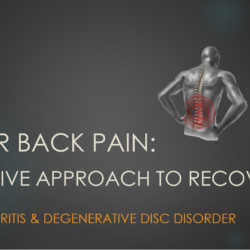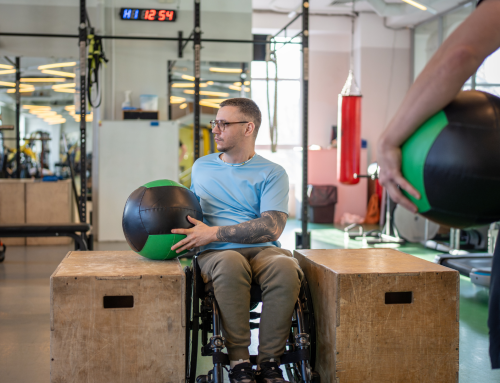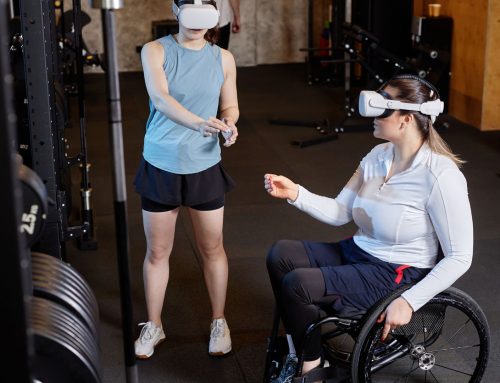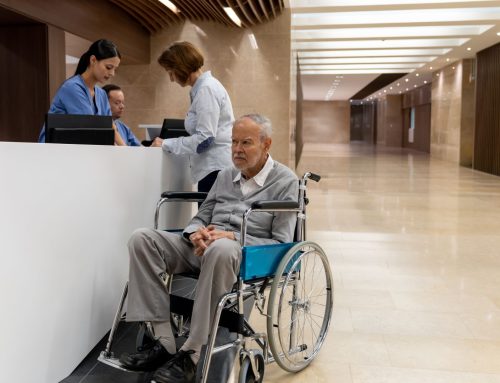One of the most common issues people come to our clinic to get addressed is lower back pain. It’s not surprising when you consider that up to 85 percent of working people can expect to experience some form of lower back pain during their lifetime.¹ Specifically in Canada, the lower back medical costs are a significant strain on our workforce’s productivity and a massive cause of missed workdays.² The good news is that an active physiotherapy program can help people get back to work and their regular routine with more lower back resiliency.
We see clients with a wide variety of issues ̶ everything from an acute injury such as a lower back strain or sprain to more chronic issues like degenerative disc disorder or facet joint osteoarthritis. As physiotherapists, we take into account the mechanism of injury, pathophysiology, and anatomical or physiological structures involved, the chronicity of the injury, and other pertinent past medical history when providing an assessment.
An Active Approach to Recovery
The evidence suggests that regardless of the type of lower back injury or condition, appropriate movement or mobilizations, strengthening, and loading (at the correct timeline) are one of the best forms of treatment. At the end of the day, exercise is the best medicine.
Contrary to pre-conceived notions, excessive resting (more than 2-3 days worth), protection of the lower back, and the application of pharmaceutical intervention, is not the gold standard of practice when recovering from the majority of back injuries. In general, we should not be in fear of moving our backs after injuring it. In fact, evidence suggests that, when pain levels have tapered off and inflammation is at a tolerable amount, early mobilization and guided lower back exercises are essential for a full recovery.
Research indicates even after spinal surgery, early mobility and physiotherapy intervention is key to reducing morbidity and length of stay in the hospital.³ In addition, appropriate loading of a person’s lower back muscles, discs, vertebrae, ligaments, and tendons after an injury are integral to improving overall function. Some studies even indicate that, after sustaining a back injury, the continuation of everyday activities within the tolerance of your pain may be an effective way of reducing pain intensity and improving lower back function.4
Lower Back Pain Case Study

Here we look at the treatment plan Propel Physiotherapy developed for a 65-year-old, retired male with osteoarthritis and degenerative disc disorder experiencing soreness, stiffness and pain in the lower back after waking up in the morning, after prolonged periods of sitting, and walking for more than 20 minutes. The interventions, results and takeaways are discussed.
Fear Avoidance Behaviours Detrimental to Full Healthy Recovery
This does not, however, mean that all lower back issues will respond to the same exercises or mobilizations. For instance, facet joint osteoarthritis may respond poorly to repeated extension exercises, while a lower back with a disc bulge may actually respond positively. Also, depending on the person’s spinal attributes, that person may require different cues for achieving a neutral spine during exercises. Having an assessment conducted by a registered physiotherapist will ensure the movements and exercises you perform are ideal for your lower back issues.
One of the most important things to remember about lower back pain is that fear avoidance behaviours are detrimental to a full and healthy recovery. Disuse and disability are further enforced by one’s fear of pain provoking movements. If we have less fear of pain, we have the ability to confront dysfunctional movements and, therefore, have a better chance meaningful recovery. Fear avoidance behaviours and beliefs have been shown to be a strong predictor of returning to work after an injury.5
In summary, many lower back injuries can be addressed through early mobilization, appropriate spinal loading, exercising, and decreasing fear avoidance behaviours and beliefs. Encouraging a client’s participation in an active physical therapy process is integral to longer lasting results and lower back resiliency.
If you or someone you love is experiencing lower back pain, contact us to set up a phone consultation or book an assessment with one of our physiotherapists.
References
- GBD 2015 Disease and Injury Incidence and Prevalence Collaborators. Global, regional, and national incidence, prevalence, and years lived with disability for 310 diseases and injuries, 1990-2015: a systematic analysis for the Global Burden of Disease Study 2015. Lancet. 2016 Oct 8;388(10053):1545-1602.
- Hoy D, Bain C, Williams G, March L, Brooks P, Blyth F, Woolf A, Vos T, Buchbinder R. A systematic review of the global prevalence of low back pain. Arthritis Rheum. 2012 Jun;64(6):2028-37. doi: 10.1002/art.34347. Epub 2012 Jan 9. Review
- Surg Neurol Int. 2014; 5(Suppl 3): S66–S73. Published online 2014 Apr 16. doi: 4103/2152-7806.130674 A review article on the benefits of early mobilization following spinal surgery and other medical/surgical procedures Nancy E. Epstein*
- The Treatment of Acute Low Back Pain — Bed Rest, Exercises, or Ordinary Activity? Antti Malmivaara, M.D., Ph.D. et al., February 9, 1995; N Engl J Med 1995; 332:351-355
- Identifying Psychosocial Variables in Patients With Acute Work-Related Low Back Pain: The Importance of Fear-Avoidance Beliefs Julie M FritzSteven Z George Physical Therapy, Volume 82, Issue 10, 1 October 2002, Pages 973–983,https://doi.org/10.1093/ptj/82.10.973
Written by







